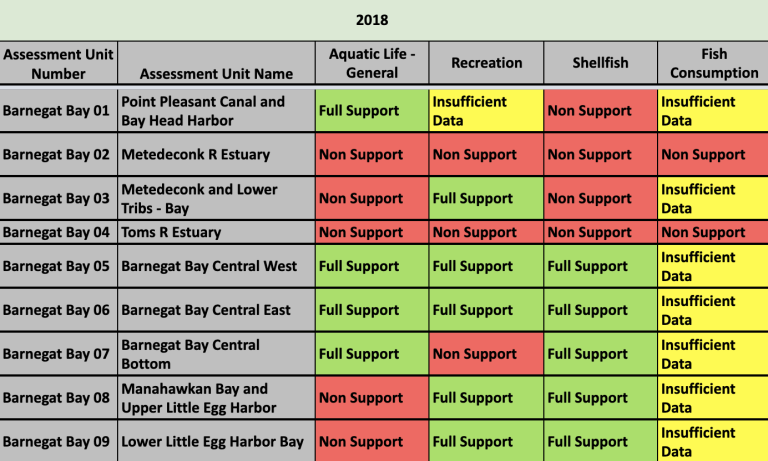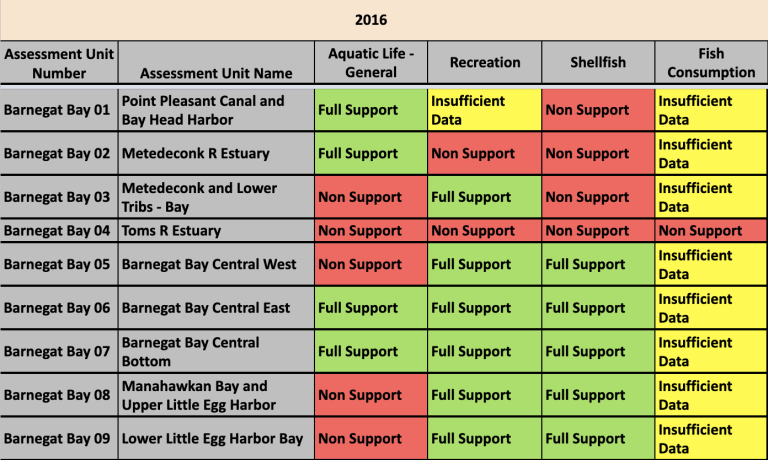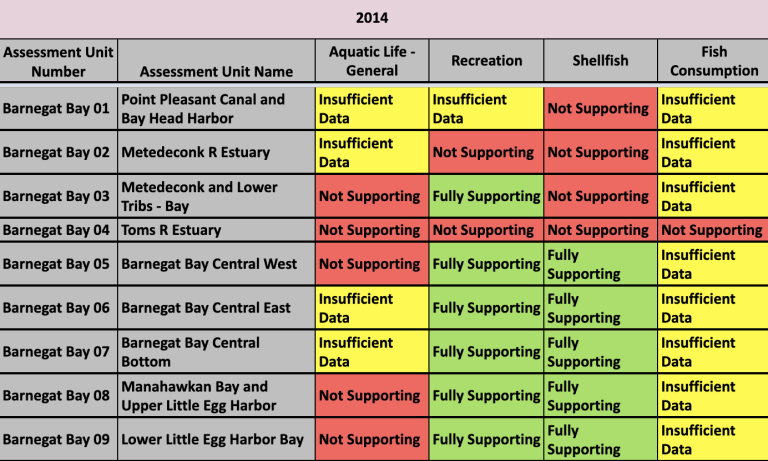
The Clean Water Act (CWA) was signed into law in 1972 and is, arguably, one of the most important pieces of legislation setting protections for natural resources in the United States. The Act’s language sets “fishable” and “swimmable” standard goals for water quality, meaning that water quality shall stay at a baseline or improve but shall not decline in these categories. According to the US EPA, the CWA’s “1972 amendments… established federal jurisdiction over ‘navigable waters,’ defined in the Act as the ‘waters of the United States’” and defined the scope of the law’s protections. The Act’s standards set out to eliminate polluted discharge into water bodies to improve their overall health for the purposes of food, recreation, and ecosystem health.
CLEAN WATER ACT TIMELINE:
“FISHABLE, SWIMMABLE” STANDARDS AND BARNEGAT BAY
Barnegat Bay is classified as a 303(d) “Impaired Waterway,” which is a designation established by the Clean Water Act. This section states ” requires states to provide a list of impaired waters to the United States Environmental Protection Agency (U.S. EPA). The term “303(d) list” is short for a state’s list of impaired and threatened waters (e.g. stream/river segments, lakes).”
Scientific data is collected periodically to assess the overall health of Barnegat Bay because of this critical designation. Below are the Annual Surface Water Quality Standards for the years 2018, 2016, and 2014, respectively:



